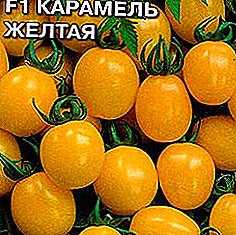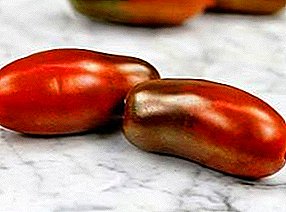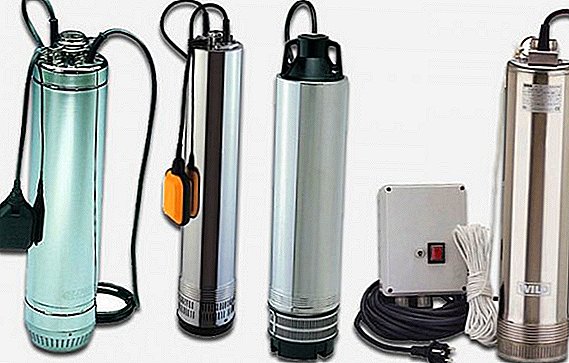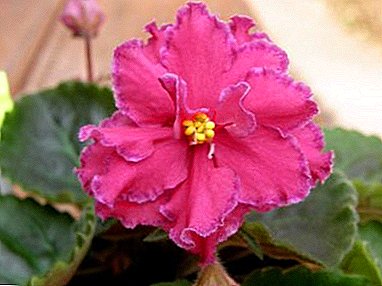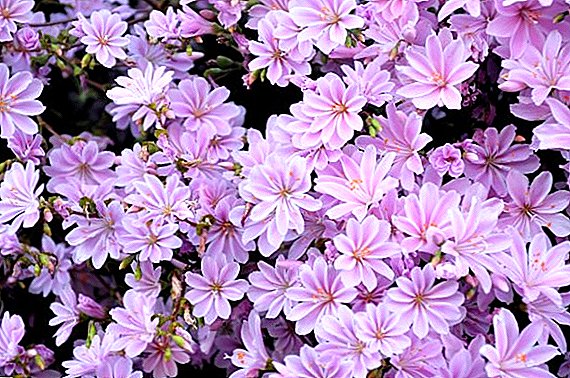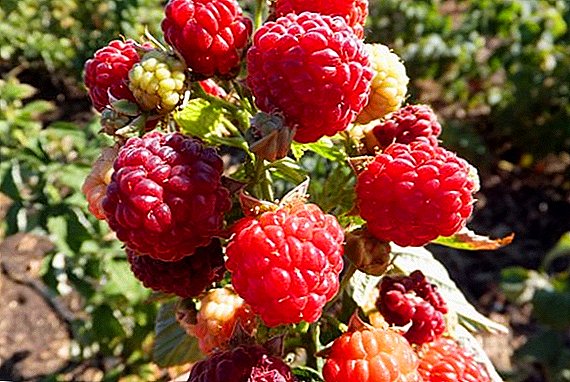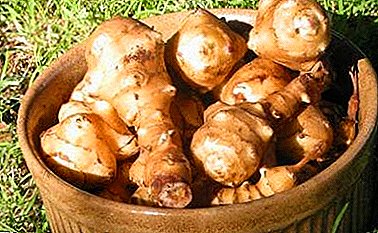
The possibility of digging up an autumn crop of Jerusalem artichoke at different seasonal periods (in autumn after ripening or next spring in the winter, overwintering right in the beds) solves the problem of its low keeping quality during storage.
Nature has given the tubers of this culture a weak peel, which facilitates the free evaporation of moisture from the fetal tissue and its rapid aging, but it also gave the tubers the ability to tolerate hard frosts without loss, remaining to winter in the ground. When the land is thawed in spring, it is possible to dig up tubers that have not lost neither color, nor taste, nor nutritional qualities during the winter.
The importance of timely harvesting
The maximum benefit and the best taste of tubers is manifested if they were dug out at the right time for this. Late harvesting reduces the nutritional value of tubers and degrades taste. If you dig the tubers ahead of its maturation, then some of the nutrients will remain in the greenery of the plant. Late cleaning does not threaten the tubers, but its ground part fades and dries out, losing feed quality.
How to determine that the earth pear ripens?
Spring planting of tubers occurs in the already heated soil, therefore, in the southern regions of the country, Jerusalem artichokes are planted in mid-April, in the middle lane - in late April or early May, in the northern part - in late May. Taking into account these terms, adding on 20 days before the emergence of shoots, one can easily determine the full readiness of the tubers for harvesting. For the middle band, the first decade of October is considered the optimal time for ripening of the earth pear.
From the first days of October they begin to cut off the ground part of the plants, if it is needed for fodder purposes or in any domestic preparations, and from the middle of the month you can remove the tubers. But if the green mass is not used by the owners in any way, and they leave it at the site, then the best visual definition of the maturity of the tubers is the beginning of the withering of the leaves of the crop (they change color and shrink).
What time is collected for eating?
 No need to rush to the collection of the entire harvest of earthen pears. Tubers do not have a long shelf life when fresh. Without changes, they can be stored for 1 month. After that, their appearance, chemical and biological composition change, moisture is lost, rotting begins. Preservation, they are not subject to drying, too.
No need to rush to the collection of the entire harvest of earthen pears. Tubers do not have a long shelf life when fresh. Without changes, they can be stored for 1 month. After that, their appearance, chemical and biological composition change, moisture is lost, rotting begins. Preservation, they are not subject to drying, too.
The way out - in the characteristics of the tubers not to lose their properties and appearance during the wintering right on the beds. In the soil under snow or a small layer of dry earth, they withstand air temperatures below -30 degrees. It is necessary to use this opportunity to save the harvest. therefore the best solution is to remove some tubers in late autumn (after the first frost), and leave another part to overwinter in the soil, sprinkled on top with a layer of dry soil or snow.
Is it possible to collect an earthen pear in the spring? In the spring, for food, the harvest can be harvested as the land thaws and in the quantity necessary for food during the week, a maximum of two. All the rest of last year's harvest should be tried to dig up before the start of fouling of tubers, when the new growing season of the plant starts. The main thing is not to miss the deadline. Dug up tubers immediately used for spring planting.
Reference! Experts believe that the tubers left for wintering in the soil, in the spring have a better taste compared to the taste of the autumn harvest tubers. But the sweetness is felt stronger.
Step-by-step instruction for tuber digging
The following pattern is recommended for digging tubers:
- From the beginning of October (or even from the middle of September), dig up healthy roots for preparing salads and other dishes as far as family needs are concerned.
- In late autumn, remove part of the crop for food or animal feed with a calculation of 1.5-2 months.
- From late autumn to spring harvest use wintering tubers (if they can be easily dug). In winter, the body simply needs vitamins!
- In the spring, vitamins are needed even more because of the inevitable seasonal avitaminosis of the human body. Therefore, the bed with natural vitamins in the garden will be of great help to the health that has deteriorated over the winter.
Collect Jerusalem artichoke in this way:
- Before harvesting Jerusalem artichoke need to cut all its bushes throughout the site. Regardless of whether part of the crop will remain under the snow until spring, or not.
 From the stem of each plant leave a stump 30-40 cm long. This process will serve as a guideline for subsequent action on the digging of tubers in the fall or spring. A sprout up to spring will almost certainly rot and will not help in removing tubers even from loose earth, but it will accurately indicate where they are.
From the stem of each plant leave a stump 30-40 cm long. This process will serve as a guideline for subsequent action on the digging of tubers in the fall or spring. A sprout up to spring will almost certainly rot and will not help in removing tubers even from loose earth, but it will accurately indicate where they are.- Next is a matter of technology, well known to all of the many years of potato harvesting experience. You can dig with shovels, but it is more convenient to do it with forks. Forks should have a not too wide space between the teeth (Jerusalem artichoke tubers are much smaller than potatoes). It is easier to dig with pitchfork and the tubers are less damaged when working with such a cleaning tool.
There are tubers in buckets or small boxes, and then transferred to the place of permanent storage. If the land is dry during harvesting, then drying is not necessary. In the case of wet soil it is required to dry the Jerusalem artichoke before putting it into storage. But in no case should not wash the tubers!
How to store crops?
Keep the crop in cool places: basement, cellar, on the balcony in the boxes (pour in wet sand). A small amount of tubers can be placed in the bottom drawer of the refrigerator.
Important! Large volumes of the crop are stored in in-depth piles and trenches, where the tubers are laid in layers, peeling layers with sawdust and covered with covering material. On top of the material lay branches of fir trees.
Jerusalem artichoke is a healthy product that is eaten both fresh and processed. The nutritional value of tubers exceeds potatoes and vegetables. The content of unique substances in them increases the value of culture for the national economy. Therefore, it is necessary to pay attention to this plant not only for gardeners, but also for state-owned agricultural enterprises.


 From the stem of each plant leave a stump 30-40 cm long. This process will serve as a guideline for subsequent action on the digging of tubers in the fall or spring. A sprout up to spring will almost certainly rot and will not help in removing tubers even from loose earth, but it will accurately indicate where they are.
From the stem of each plant leave a stump 30-40 cm long. This process will serve as a guideline for subsequent action on the digging of tubers in the fall or spring. A sprout up to spring will almost certainly rot and will not help in removing tubers even from loose earth, but it will accurately indicate where they are.